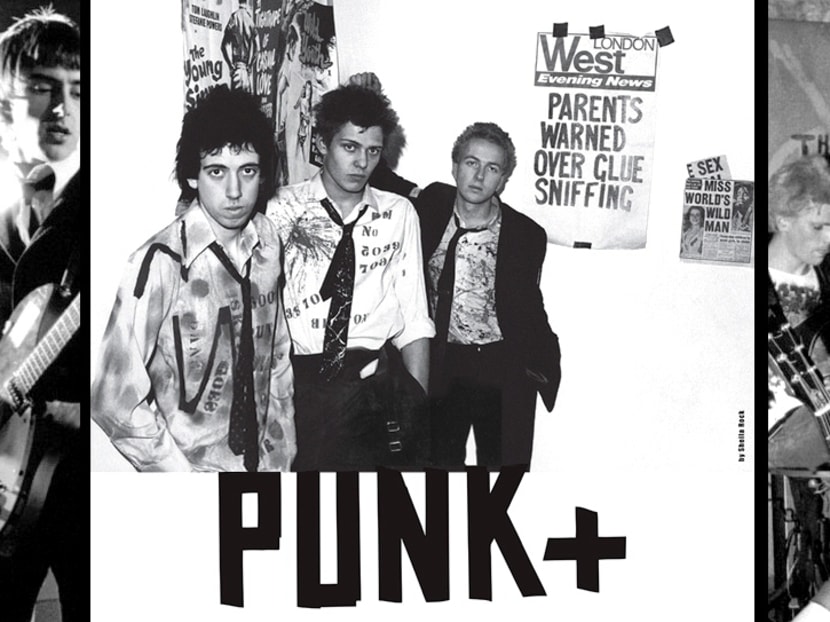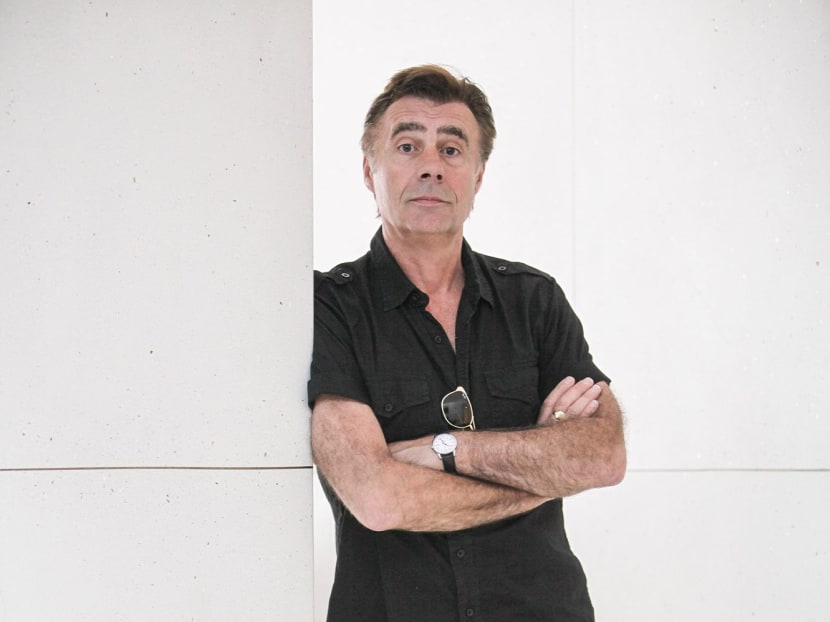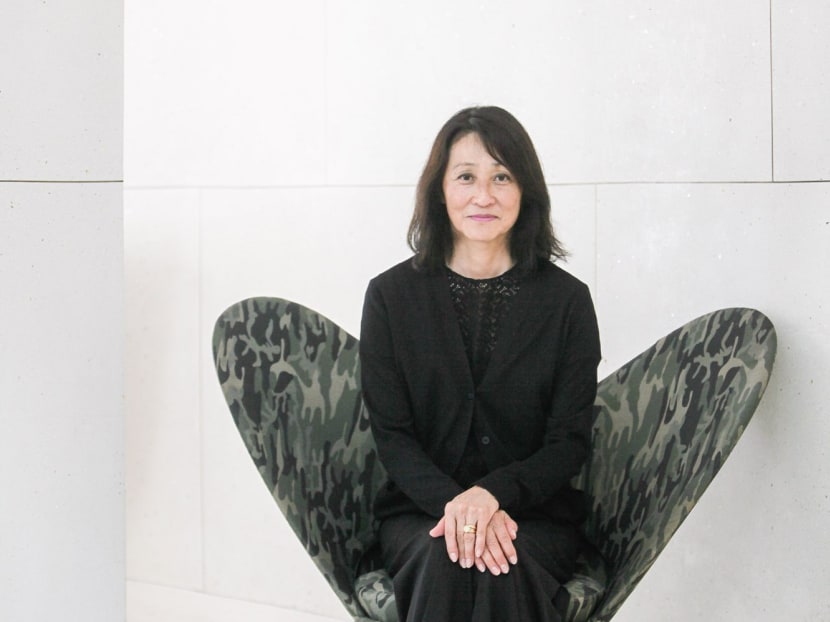Sheila Rock: The accidental witness to the punk movement
SINGAPORE – There are at least two important witnesses to the early punk movement of the 1970s in the United Kingdom.



SINGAPORE – There are at least two important witnesses to the early punk movement of the 1970s in the United Kingdom.
The first is English journalist Jon Savage, who later wrote a book on the history of punk music, England’s Dreaming: Sex Pistols And Punk Rock. The second is American photographer Sheila Rock, who quite unwittingly captured the evolution of punk, even before she turned professional.
From Oct 2 to 26, Rock’s works will be on display at The Substation Gallery in Singapore, as part of the agnes b. PUNK+ Photo Exhibition tour, which will showcase 28 photos curated from her book, Punk+. Glen Matlock, the bass guitarist of the original line-up of the Sex Pistols, will also be giving an exclusive performance at the launch event on Oct 1.
“I have always been drawn to things that are a bit unconventional – the mavericks of the world,” said Rock, whose exhibition includes photos of major acts of the era such as The Clash, Chrissie Hynde, the Sex Pistols and Generation X.
“I felt that the people were interesting, so I photographed them. There was something wild. It was creative,” she said. “I am not a historian, but I just felt that it was very positive, very exciting. I was being swept away by what was going on. Sometimes when you are living the life, you don’t realise how important it is. It is only in hindsight that I think, ‘Wow, this was different’.”
But is punk - as suggested by the Crass song - dead? Both Rock and Matlock believe the scene, as they had experienced in the ’70s, no longer exists.
“I don’t really know that there is a punk scene that I know it as,” Matlock said. “There is a bit of a misconception about the Sex Pistols and punk. We never saw ourselves as a punk band. We were just the Sex Pistols, and other people called us (a punk band). We always wanted to be individual - and you can’t be individual if you are all the same.”
Rock agreed: “Maybe there are punk bands that exist, but they might be bands that are copying what was already out there? Is that really punk? No. Because punk is original. Punk was trying to make something out of nothing, pushing the boundaries. I think technology has made it very difficult for new punk.”
She added: “I think that’s one of the reasons why young people are finding the punk movement so strong, 35 or 37 years later. Nothing is as visually powerful, almost politically powerful, because everything is the same now. You can get everything on Amazon, eBay or whatever.
“But in those days you couldn’t get any of that. It was about the things the young people were making – like The Clash made their own clothes. There was a synchronicity of ideas, and they were very original.”
Q: You weren’t a professional photographer when you began taking pictures of the punk scene. What made you start?
A: I just inherited a camera when I was a teenager. But I’ve always had a keen interest in photography. When something as visual and wild and exciting as punk started to happen, it’s very compelling, and I just started documenting. But it wasn’t as if I was a journalist or like I had an assignment. It’s just something that I did. But I’m so surprised that I did it with such tenacity, that I could continue to photograph clubs and fashion shops. I just found it visually interesting. And the only other person I knew who had the same kind of interest in what felt like a social phenomena was Jon Savage. And Jon subsequently wrote a book about it. Because both of us were seeing that we were witnessing something important. We didn’t know that it was important, but that it was different.
Q: You found it very cool?
A: It was very cool! I’ve asked myself and I don’t know why. You feel that something is cool and you photograph it. Now when I look at this box of photographs, I think to myself, why did I carry on with such consistency? That’s what I think is interesting to me, that I have produced something that feels like an important social document. (The book Punk+) weighs a lot and feels important - and very few people photographed all those things. Some photographers were photographing just the bands. But I seemed to have photographed a social movement, a fashion movement as well.
Q: You’ve said that you come from a middle-class American family. Were they aware of what you were doing?
A: No. I did have the opportunity (to document punk) because I was married to (British photographer) Mick Rock. And he, in a similar way, was just being swept away. Life is just very interesting how one thing leads to something else. He was asked to go on the David Bowie tour, so we went on the David Bowie tour. And that was like this amazing group of interesting artists and craziness and flamboyance and poets and mime artists. It’s like a circus of extraordinarily talented people. And through them I was introduced to the punks in New York. The punks in New York were much more art-based – Patti Smith and poets. And then in London it was much more economic. It was London at a very depressed time, so people were reacting to that, but they had heard of this sort of New York thing and it was interpreted in a British way.
Q: Why do the people in your pictures look so miserable?
A: They look miserable? It wasn’t a feel good time. But people were having fun. Young kids would not be there if they didn’t feel a sense of camaraderie. But like me, it was feeling as though something was changing, and young people felt as though they wanted to be part of that change. Because before that everything was kind of bland, it was very conservative, the social norms never allowed you to be this different. And what do young people like? They want to be different. They want to embrace the change. And you just felt that in the atmosphere. There were two waves of punk. There was the early wave which was very creative, very art-school based: It was young people wanting to different but in a creative way. They wanted to embrace freedom, freedom of expression. And in the second wave, which the Sex Pistols are largely responsible for, became quite negative and attracted a much more negative ... a sort of “f*** you” attitude. And I never experienced that. I experienced it as something very theatrical. Bands like The Damned were incredibly theatrical. Everyone was just doing their own thing.
Q: Is it difficult to make a living as a photographer?
A: I think the world has changed. A lot of these pictures were taken even before I was a photographer. Some of the later ones in the end of the book were done primarily for a magazine called The Face, which was like a style-music bible. And that really launched my career. Yes, I’ve had a very successful working life as a photographer, doing advertising, working for magazines like TIME and Elle. I started working in different countries, in Germany and Italy. And then I started to go to America much later. But I’d say in the last five to six years particularly, it’s become much harder for photographers to make a living. And that is largely because of technology and the Internet. It’s very interesting that my archive now makes as much money for me as if I was commissioned to do a job. And it’s just the emphasis on photography has changed. I don’t begrudge the fact you can do a great picture on an iPhone - I think that’s kind of interesting. If it educates people about photographs and looking and seeing things, then I think it’s wonderful. The only thing now is that people don’t have the sophisticated eye. I’ve certainly tried as a photographer to craft my light, to create a mood, to think about pictures in a slightly more sophisticated way. And now people can just take any pictures. They are great, but they don’t know what they are doing. I don’t know ... I am waiting for the time where people will look at analog pictures in a more considered way. The way right now in music are embracing vinyl and listening to vinyl and thinking that vinyl is more cool and has more depth. It’s the same with photography. Film has more depth. Instant is great, but it also has its place. It’s not everything.
Q: What do you hope people take away from your exhibition?
A: I think it’s the energy. I am interested in conveying a very positive view of punk, not a negative, nihilistic view. I want people to feel inspired by the creativity of this time. Young people just wanting change, just wanting to express themselves in fashion, in music, in writing. I wouldn’t say there’s a lot of creativity in the photography – the photography was just capturing this extraordinary time. So if it inspires people to be different and not be this sort of beige, grey, conformist, where everyone looks the same, then I think it’s a good thing. Just try to discover a little more of who you are.
The agnes b. PUNK+ Photo Exhibition will be unveiled on Oct 1 at The Substation Gallery, before opening to the public from Oct 2 to 26. Visit http://agnesb-punkplus.com/ for more information.
Read the full interview with Glen Matlock on Poparazzi (http://tdy.sg/poparazziblog)





